The Long Road of Seven Spells
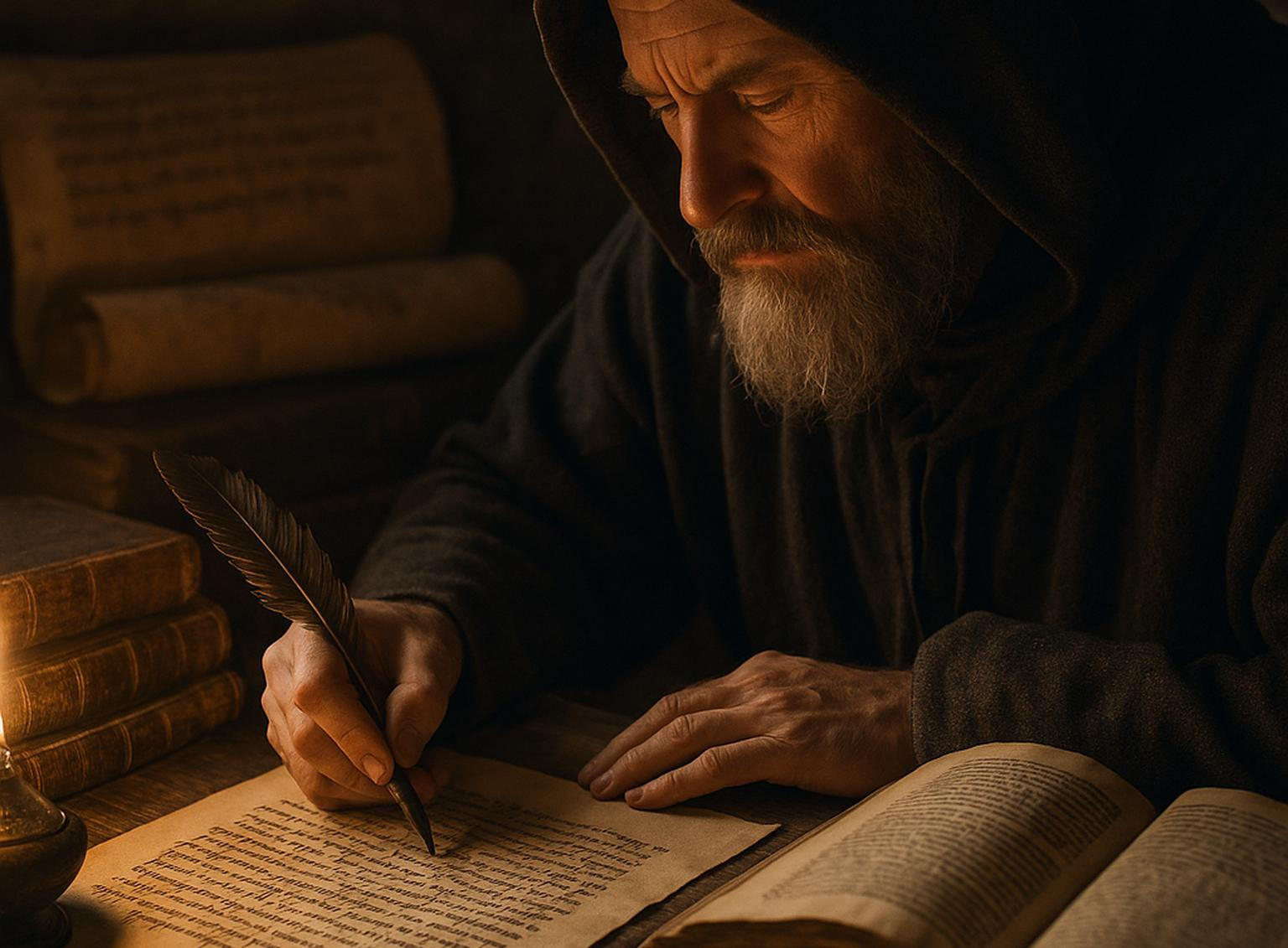
Documenting a World Built to Last
When people discover The Seven Spells of Destruction today — whether through Discord, the website, or word of mouth — they’re stepping into something far deeper than a new fantasy game. This world has been with me since 1993, evolving through notebooks, floppy disks, dot-matrix printouts, web servers, and now, modern bots.
This page exists to document that journey — not as nostalgia, but as part of a living continuum. Seven Spells was never a one-off project. It was always meant to grow, to change, and to endure.
1993: A Pen, a Notebook, and a Big Idea
The very first version of Seven Spells began in biro and pencil, scratched onto lined A4 notepads and bound into hardback folders. I was 13 years old, and inspired by Fighting Fantasy and the spirit of make-it-yourself game design.
Each passage was manually numbered. Arrows and codes guided players through choices. Dice rolls affected outcomes. I didn’t have access to publishing tools — so I made do with what I had. The world began to take shape in the margins and between the lines: cities like Port Obligan, the Desert of Skulls, the scrolls of the peace pact... all seeded right here.
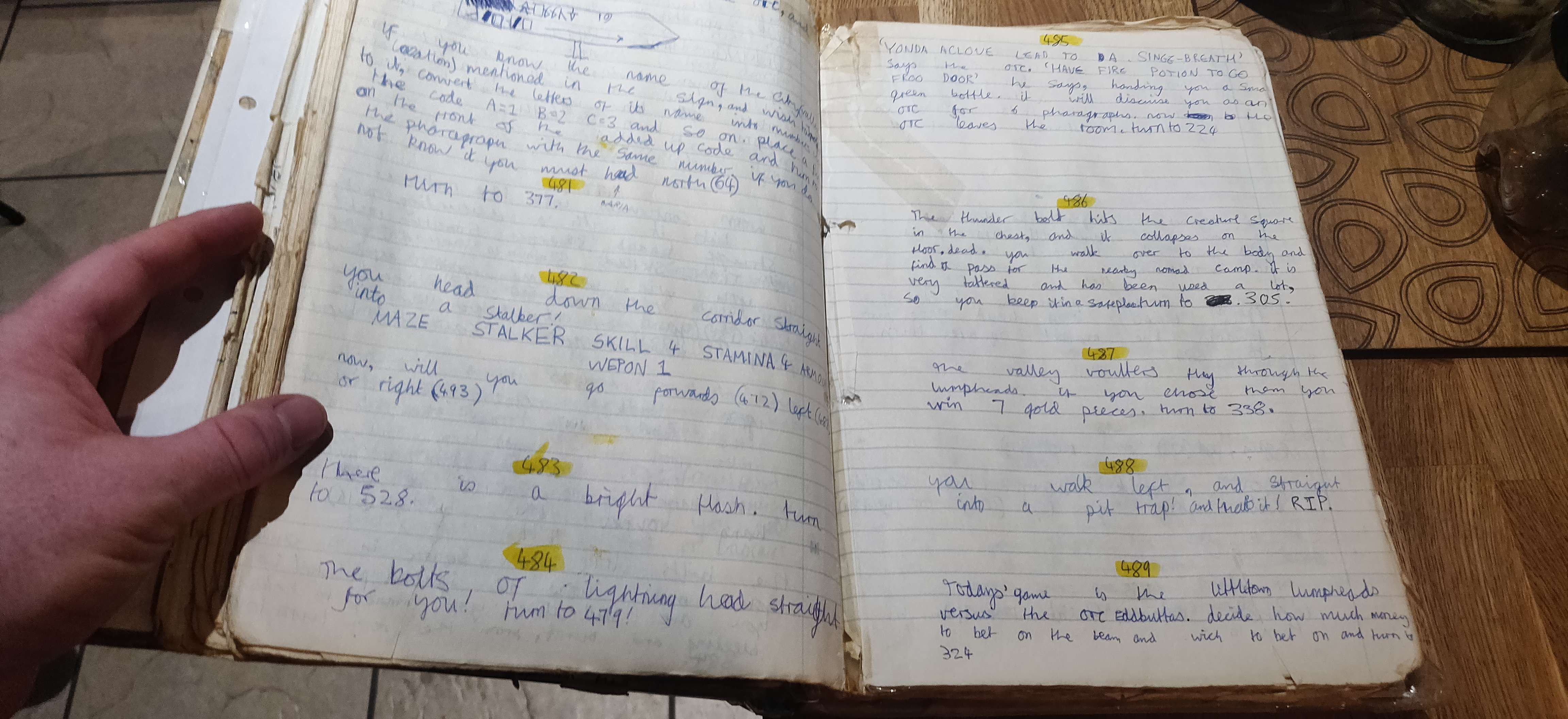
1995: Typing It Out and Printing It Properly
By 1995, I retyped the entire game into Inter-Word on the BBC Micro. It was printed on a dot-matrix printer, bound into a clean A5 volume. This version was more legible, more formal, and became the definitive draft for years.
The formatting was tighter. Dead ends were ironed out. The mechanics were refined — but the heart of it remained. It still felt like a living story, with options like:
“Will you use the spell to fry the door, or try your rusted key?”
I still have that printed copy. The paper has aged better than the handwritten version — but the ink has faded to a faint grey. I’m in the process of preserving it digitally.
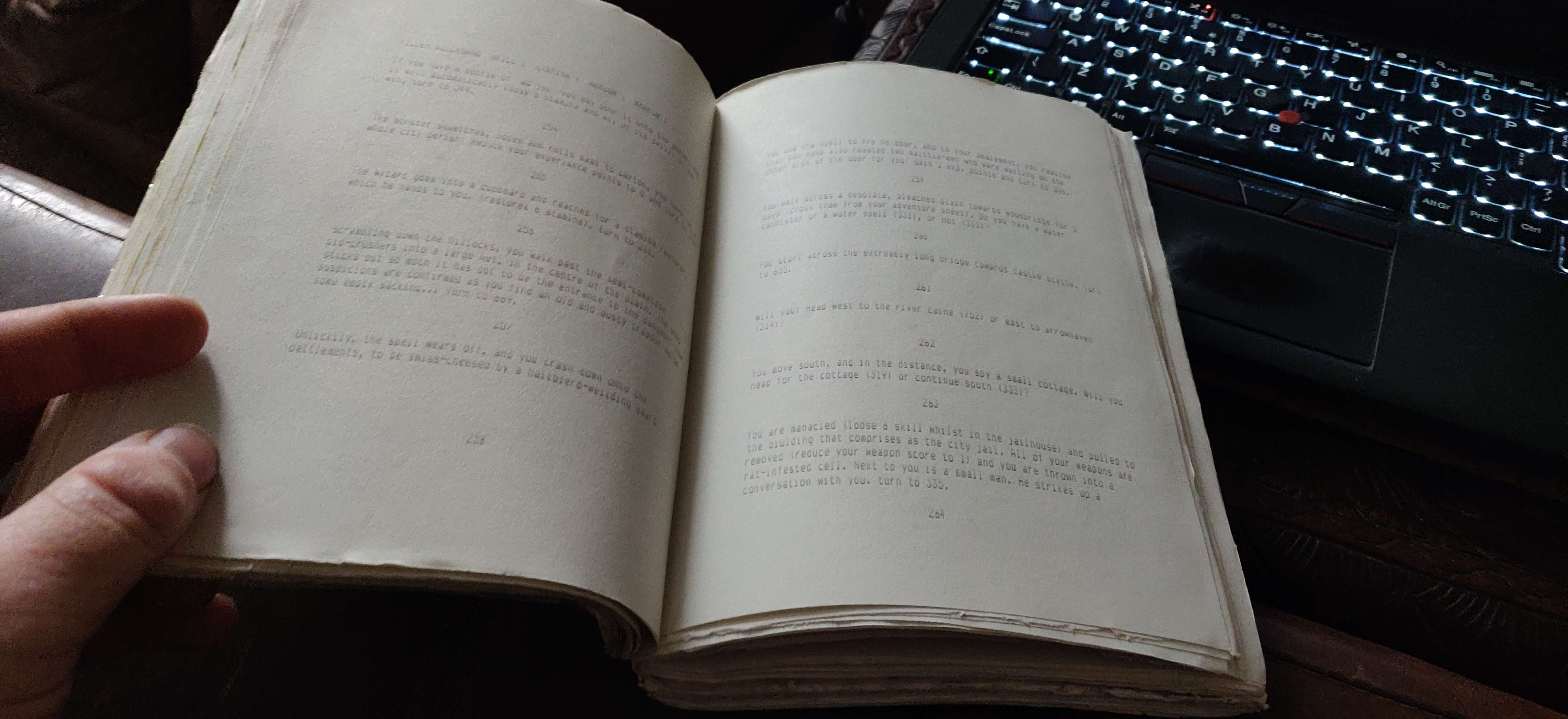
2001: Online, and Alive
The web version launched in 2001, built using raw HTML, early JavaScript, and backend logic written entirely in C++ CGI — no PHP, no frameworks, just fast and direct code. It featured persistent player state, branching location logic, stat-based combat, item inventories, and a surprisingly robust multiplayer chat system. Players could teleport between coordinates, leave items on the floor, and roleplay in shared spaces.
The interface was stark: black backgrounds, blood-red text, and glowing stat boxes. It drew from the style of early MUDs and gothic dungeon crawlers. Despite its simplicity, the systems were remarkably deep — with elemental resistances, timed spells, encumbrance limits, and dynamic events.
It ran on my own bare-metal server. I maintained the backend myself, and while it never became huge, it had a loyal following. Players still remember it fondly.
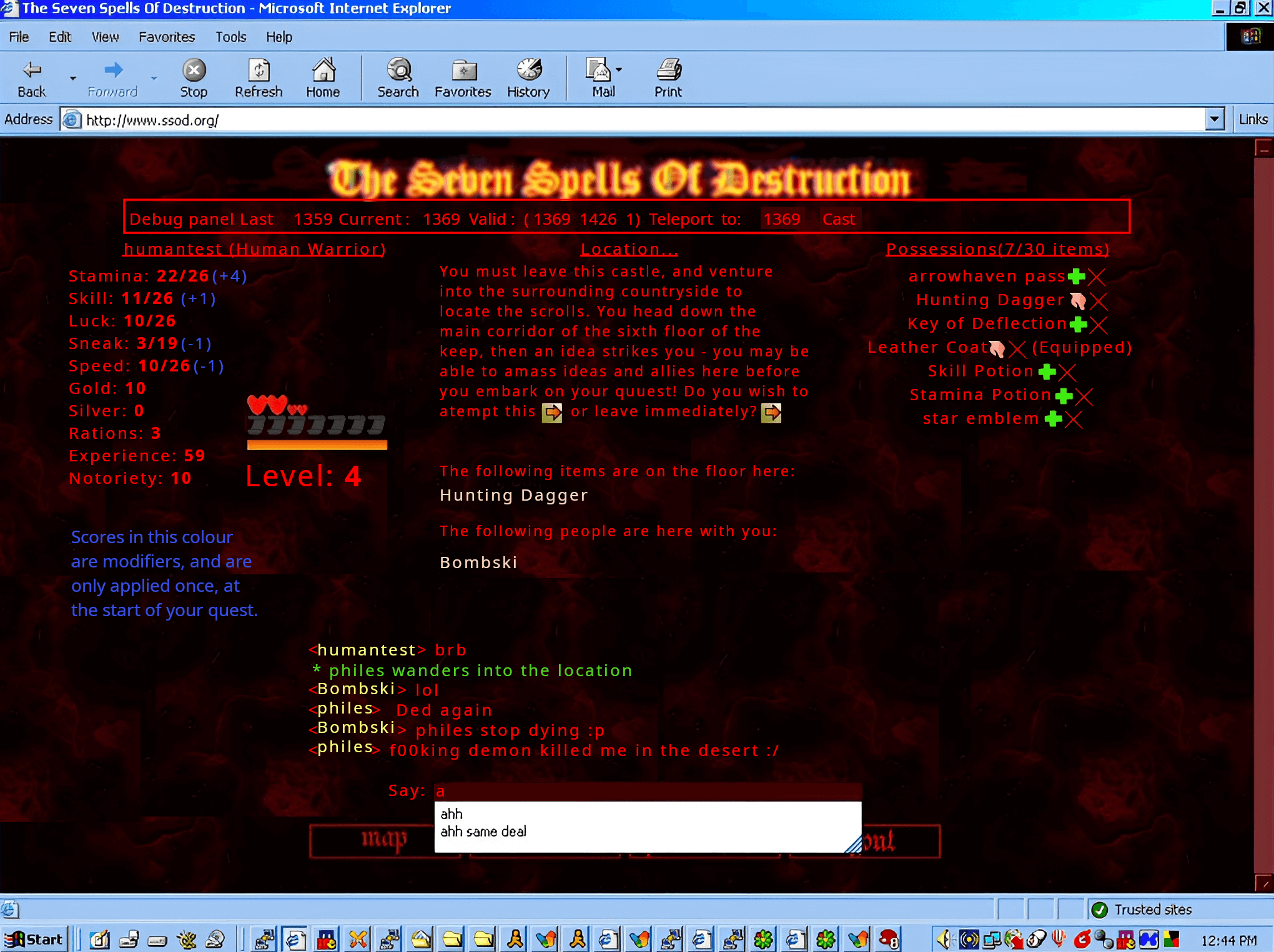
And parts of that version still live on. All the world data — from items to location texts to monster stats — was preserved and transformed into the foundation of the current version. Even the original C++ source code has survived in a GitHub archive, where it remains as a snapshot of its time. It’s no longer safe or stable enough to run on the modern web, but it served as the bridge that carried Seven Spells into the next era.
Rather than being replaced, the game evolved — organically — into the fully modern system it uses today.
2025: The World Moves Forward — But Never Forgets
Today, Seven Spells runs on a fully integrated Discord engine I built using my D++ library. Every location is a live, branching narrative. Every stat is tracked. Choices matter. Combat is deterministic. The world is persistent, and nothing resets unless you walk away.
Players can explore towns like Larton, break union strikes, betray ancient orders, or side with monsters — all from within a single Discord interface. The game now includes:
- A fully working inventory and equipment system
- Save/load slots per player
- Readable, lootable books scattered across the world, in the style of Skyrim
- Hunting and cooking mechanics, inspired by Breath of the Wild, allowing you to prepare food, manage resources, and survive harsh regions
But for all the new mechanics and systems, the soul of the game remains:
You make a choice, and the story responds.
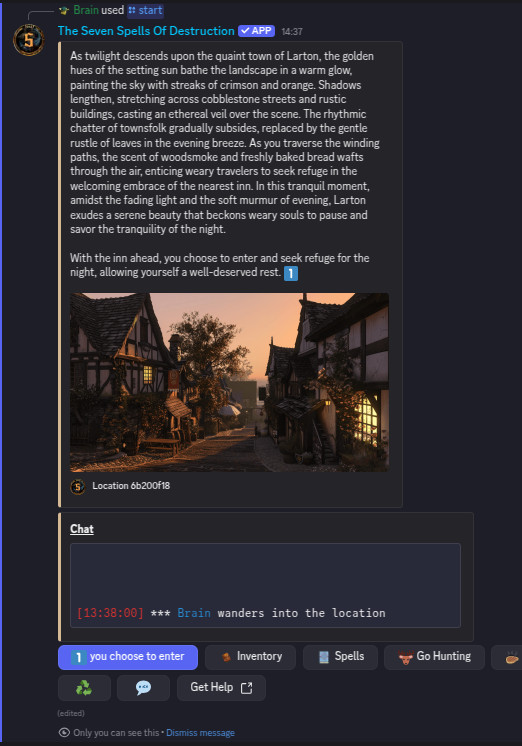
Built to Last
Seven Spells has never been rebooted. Never abandoned. The same core world, the same ancient scrolls, the same ruined castle on the coast — they’ve been there all along. They’ve just evolved, like any long-running story should.
Each format layered onto the last: biro, then bitmap, then HTML, then Discord bot. But the player experience is still shaped by imagination and consequence.
This game wasn’t written for a season. It was written for the long game.
Preservation in Progress
Some of the physical copies — especially the original handwritten notebooks — are showing their age. The paper is brittle. The ink is fading. I’m currently archiving as much as I can, scanning and photographing the pages to preserve the history.
If you’ve played Seven Spells at any point — in 2001, or today — you’re part of something rare: a game that has grown with its creator, not away from them.
Thank you for being here. The scrolls are still hidden. The world still waits.
And it’s not done yet.